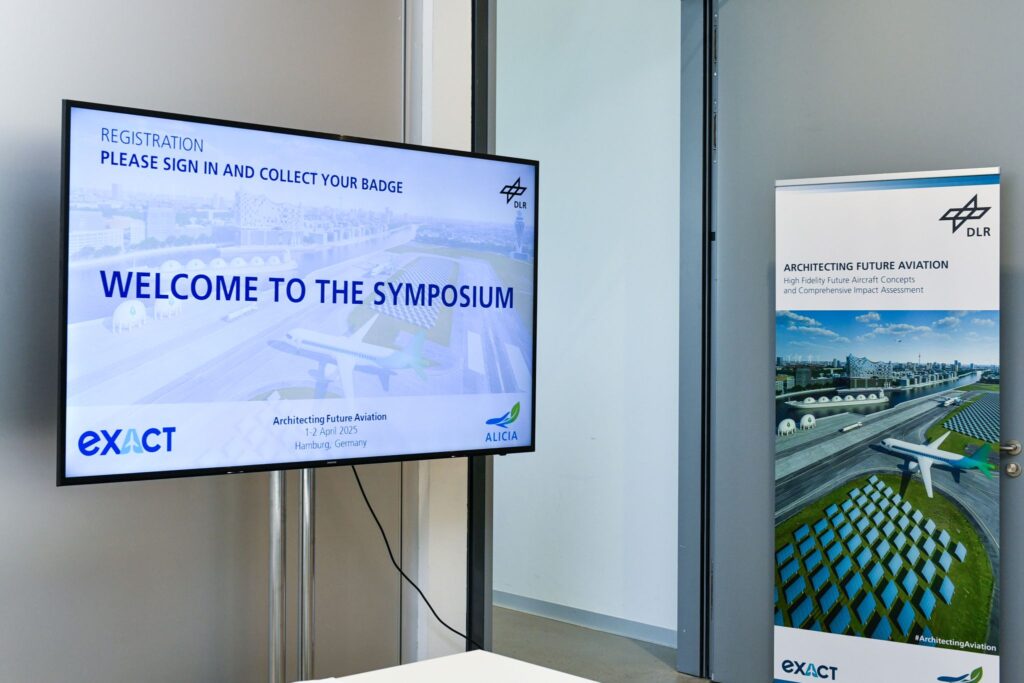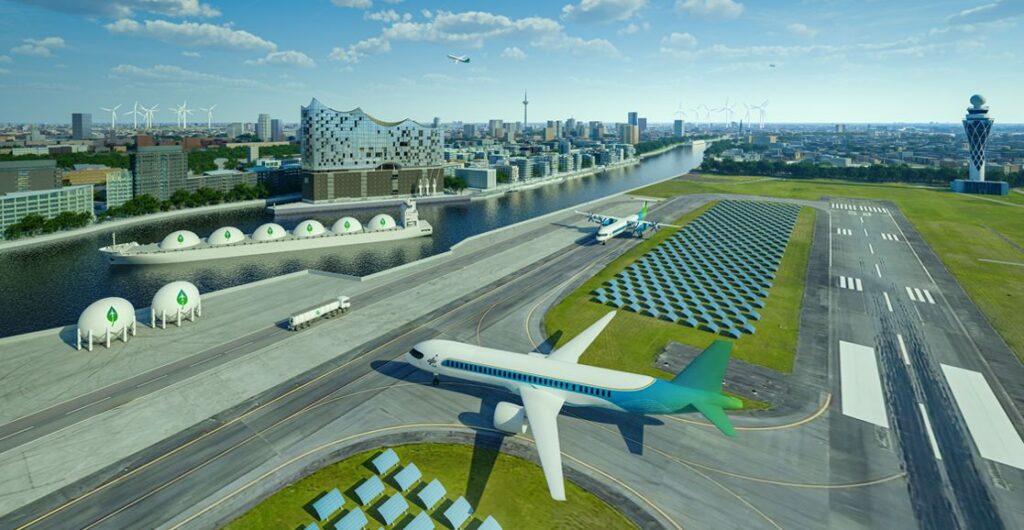Flight shame versus longing: Wouldn’t it be great to fly from Hamburg to Paris, enjoy a great café au lait, a really good croissant and stroll through the streets? If only you didn’t have to feel ashamed, or worse, worry about destroying our children’s world. Whether you want to enjoy a nice pizza while exploring our European heritage in Bella Roma, or leave from Munich to a beach holiday in Croatia, the problem remains the same: either you accept long travel times, or you contribute to the climate impact that leads to global warming.
So, how much more would you be willing to pay for your flight ticket if you could reduce the climate impact immensely? And is it even possible?
In EXACT, one of the largest comprehensive studies on future sustainable aviation led by our DLR Institute of System Architectures in Aeronautics, the DLR has designed and evaluated several future aircraft. One of the concepts would reduce operating costs by 5-15% (meaning there are no expected rise of ticket prices) compared to the most efficient current aircraft in the same class. At the same time, its climate impact over the entire lifecycle will be reduced by 65-90%, and on many routes it could can even have zero in-flight emissions.
But this is not all. While the trend towards e-mobility on our roads is continuing, it was unthinkable for commercial flights carrying around 200 people at a time so far. Why? Because of the high mass of batteries generally speaking – and with view to the high amount of energy reserves needed for aircraft of this passenger class. These should be on board in case it has circle over an airport or fly to another one. To fly 500 km on battery power alone, an aircraft would need to carry almost the same amount of energy as it already uses – even though it may never need to use it. In terms of batteries, this would make an aircraft very heavy, inefficient and costly.
And here comes the beauty of our EXACT’s plug-in hybrid’s architecture into play: It is designed for flying battery-electrical for 500 km in a highly efficient way (most commonly flown distance mid-haul aircraft). It has a kerosene-fueled gas turbine as a range extender for reserves and a longer range of up to 2,800 km. In this way, the aircraft is highly economical and can fly battery-electrical only, most of the times. It also has a very low climate impact on longer flights, even if it uses fossil fuels instead of sustainable aviation fuels for this. It could become a serious option for airlines, as it could serve both short and medium-haul routes.
These facts could make up for the slightly lower speed of 750 km/h, and it could also be a valid option in a scenario where sustainable primary energy is limited.
If this aircraft were in use, we might not have to weigh up the shame of flying against the longing, or consider paying a much higher price to overcome this issue.


